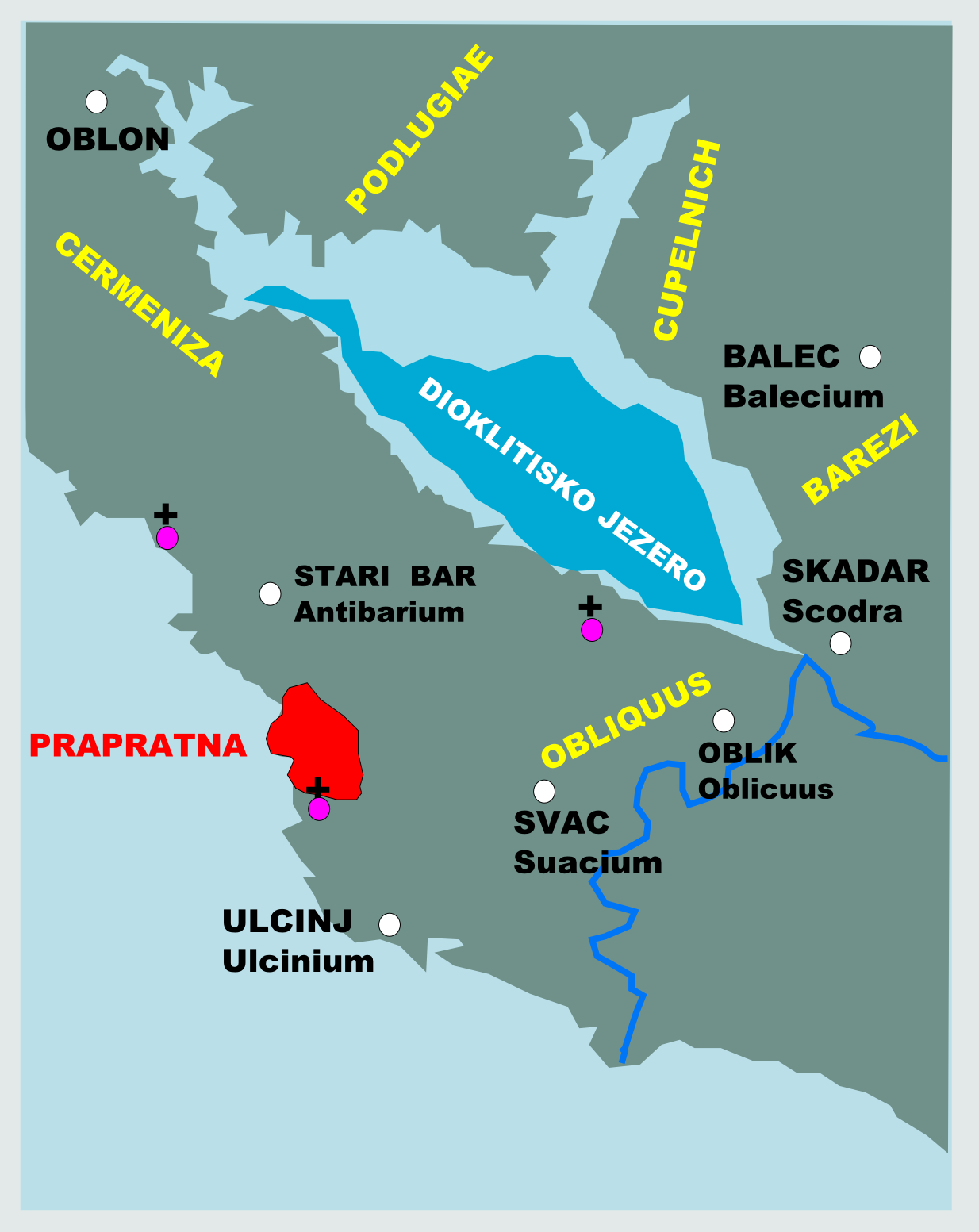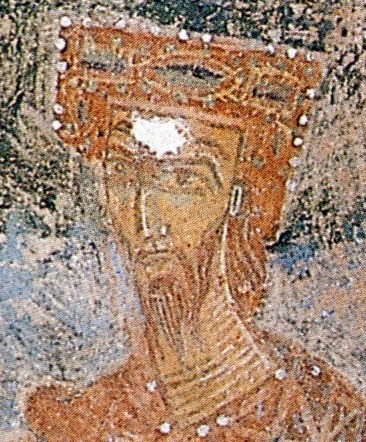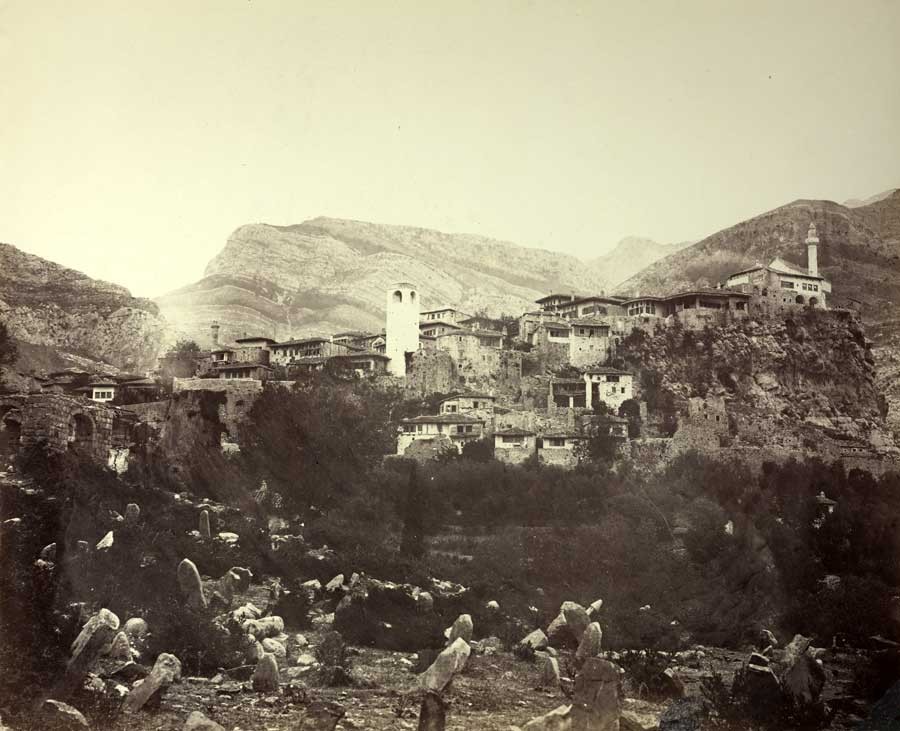|
Prapratna XI C
Prapratna ( sr-cyr, –ü—Ä–į–Ņ—Ä–į—ā–Ĺ–į, ) was a ''Ňĺupa'' (county) in Duklja, and one of the courts of Mihailo I of Duklja (r. 1050‚Äď1081), alongside Dekatera (Kotor), according to Byzantine chronicler John Skylitzes (fl. 1057‚Äď59). According to the later, somewhat dubious source, ''Chronicle of the Priest of Duklja'', a ruler named Hvalimir who was alleged to be an ancestor of Jovan Vladimir (ca. 990‚Äď1016), held Zeta and its towns, and the following counties: Lusca (LuŇ°ka), Podlugiae (PodluŇĺje), Gorsca (Gorska), Cupelnich (Kupelnik), Obliquus (Oblik), Prapratna, Cermeniza (Crmnica) and Budua (Budva) with Cuceva (Kuńćevo) and Gripuli (Grbalj). Furthermore, it states that Stefan Vojislav (r. 1018‚Äď1043) was buried in the court church of St. Andrew in Prapratna. Czech historian Konstantin Josef Jireńćek (1854‚Äď1918), in 1879, identified Prapratna with Papratnica in the Crmnica valley of the Principality of Montenegro. The etymology is derived from ''praprat'', "fern", which ... [...More Info...] [...Related Items...] OR: [Wikipedia] [Google] [Baidu] |
Stefan Vojislav
Stefan Vojislav ( sr-Cyrl, –°—ā–Ķ—Ą–į–Ĺ –í–ĺ—ė–ł—Ā–Ľ–į–≤, ; 1034‚Äďd. 1043) was the Prince of Duklja from 1018 to 1043. Beginning in the year 1018, he served as a Byzantine governor, until 1034 when he led an unsuccessful revolt that landed him in a prison at Constantinople. He managed to escape and returned home, this time successfully gaining the independence of his statelet and expanding his rule over southern Dalmatia and its hinterland. He is the eponymous founder of the Vojislavljevińá dynasty. Origin and early life The contemporary Byzantine writers call him either a Serb or a Dukljan (''őíőŅŌäŌÉőłőĽő¨ő≤őŅŌā ŠĹĀ őĒőĻőŅőļőĽő∑ŌĄőĻőĪőĹŌĆŌā)'', but do not mention his genealogy, while the '' Chronicle of the Priest of Duklja'', a posterior, more dubious source, calls him a cousin to previous ruler Jovan Vladimir (r. 990‚Äď1016).ŇĹivkovińá 2006, "–°—ā–Ķ—Ą–į–Ĺ –í–ĺ—ė–ł—Ā–Ľ–į–≤". Having reached its pinnacle during the long reign of emperor Basil II, the Byzantine Empire entered ... [...More Info...] [...Related Items...] OR: [Wikipedia] [Google] [Baidu] |
Subdivisions Of Serbia In The Middle Ages
Subdivision may refer to: Arts and entertainment * Subdivision (metre), in music * ''Subdivision'' (film), 2009 * "Subdivision", an episode of ''Prison Break'' (season 2) * ''Subdivisions'' (EP), by Sinch, 2005 * "Subdivisions" (song), by Rush, 1982 Science, technology and mathematics * Subdivision (rank), a taxonomic rank * Subdivision (botany), or subphylum, a taxonomic rank * Subdivision (graph theory), adding new vertices to some edges of a graph, whereby replacing the edges by paths * Subdivision (simplicial complex) * Subdivision (simplicial set) * Subdivision surface, in computer graphics Other uses * Subdivision, an administrative division, a portion of a country * Subdivision (India), an administrative division in India * Subdivision (land) Subdivisions are land that is divided into pieces that are easier to sell or otherwise Real estate development, develop, usually via a plat. The former single piece as a whole is then known as a subdivision. Subdivisions ma ... [...More Info...] [...Related Items...] OR: [Wikipedia] [Google] [Baidu] |
Medieval History Of Montenegro
The early written records of the history of Montenegro begin with Illyria and its various kingdoms until the Roman Republic incorporated the region into the province of Illyricum (later Dalmatia and Praevalitana) after the Illyro-Roman Wars. In the Early Middle Ages, Slavic migration led to several Slavic states. In the 9th century, there were three principalities on the territory of Montenegro: Duklja, roughly corresponding to the southern half, Travunia, the west, and Rascia, the north. In 1042, Stefan Vojislav led a revolt that resulted in the independence of Duklja and the establishment of the Vojislavljevińá dynasty. Duklja reached its zenith under Vojislav's son, Mihailo (1046‚Äď81), and his grandson Bodin (1081‚Äď1101). By the 13th century, ''Zeta'' had replaced ''Duklja'' when referring to the realm. In the late 14th century, southern Montenegro (Zeta) came under the rule of the BalŇ°ińá noble family, then the Crnojevińá noble family, and by the 15th century, Zeta ... [...More Info...] [...Related Items...] OR: [Wikipedia] [Google] [Baidu] |
Vojislavljevińá Dynasty
The House of Vojislavljevińá ( sr-Cyrl, –í–ĺ—ė–ł—Ā–Ľ–į–≤—ô–Ķ–≤–ł—õ, pl. Vojislavljevińái / –í–ĺ—ė–ł—Ā–Ľ–į–≤—ô–Ķ–≤–ł—õ–ł) was a Serbian medieval dynasty, named after ''archon'' Stefan Vojislav, who wrested the polities of Duklja, Travunia, Zahumlje, inner Serbia and Bosnia from the Byzantines in the mid-11th century. His successors, kings Mihailo I Vojislavljevińá (d. 1081) and Constantine Bodin (d. 1101) expanded and consolidated the state. During the 12th century, the main line of the Vojislavljevińá family was ousted by their cadet branch, the Vukanovińá. (which became the Nemanjińá dynasty), in the late 12th century. History Background Stefan Vojislav Stefan Vojislav, the progenitor of the dynasty, was a nobleman in Byzantine service who had the titles of ''archon'', and '' toparch'' of the Dalmatian ''kastra'' of Zeta and Ston.Kekaumenos, ed Litavrin, 170-2Paul Magdalino, ''Byzantium in the year 1000''p. 124/ref> In 1034 he led an unsuccessful revolt that resul ... [...More Info...] [...Related Items...] OR: [Wikipedia] [Google] [Baidu] |
Mrkojevińái
Mrkojevińái (alternatively Mrkovińái, cnr-Cyrl, –ú—Ä–ļ–ĺ—ė–Ķ–≤–ł—õ–ł/–ú—Ä–ļ–ĺ–≤–ł—õ–ł, ) is a historical tribe and region in southwestern Montenegro, located between the towns of Bar and Ulcinj. The region borders Krajina to the east. The Mrkojevińái form a distinct ethno-geographical group with their own dialect of the Serbo-Croatian language, while also exhibiting a degree of bilingualism in Albanian. Their customs are distinct from their neighbouring Slavic and Albanian communities, but they also show influence and contacts with them. In the 400-year Ottoman period, the Mrkojevińái converted to Islam, which forms an important aspect of their cultural identity. Geography The region is in the southern parts of Bar Municipality and forms one of its communal municipalities. There are nine settlements: Velje Selo, Dabezińái, Dobra Voda, Gorana (Mala and Velja), Grdovińái, Kunje, Ljeskovac, Pelinkovińái and Peńćurice. The historical settlements of the tribal region also includ ... [...More Info...] [...Related Items...] OR: [Wikipedia] [Google] [Baidu] |
Bar, Montenegro
Bar (Montenegrin language, Montenegrin: Bar, –Ď–į—Ä, , ) is a town and seaport in Coastal Montenegro, Coastal region of Montenegro. It is the capital of the Bar Municipality and a center for tourism. According to the 2023 census, the city proper had 15,868 inhabitants, while the total population of Bar Municipality was 46,171. Name Bar is supposed to be a shortened Slavic variant of ''Antivari''. The name is thought to be derived from the Latin ''Antibarum'' or ''Antibari'', which later in Greek was transformed into ''Antiv√°rion / Antivari'' due to its pronunciation. "Antibari", meaning "opposite Bari", is a name taken because of it is location across the Adriatic Sea from Bari in Italy. Variations are in Italian language, Italian, ''Antivari / Antibari''; in Albanian language, Albanian, ''Tivari'' or ''Tivar''; in Turkish language, Turkish, ''Bar''; in Greek language, Greek, őėő∑ő≤ő¨ŌĀőĻőŅőĹ, ''Thiv√°rion'', őĎőĹŌĄőĻő≤ő¨ŌĀőĻőŅőĹ, ''Antiv√°rion''; in Latin, ''Antibarium''. His ... [...More Info...] [...Related Items...] OR: [Wikipedia] [Google] [Baidu] |
Fern
The ferns (Polypodiopsida or Polypodiophyta) are a group of vascular plants (plants with xylem and phloem) that reproduce via spores and have neither seeds nor flowers. They differ from mosses by being vascular, i.e., having specialized tissues that conduct water and nutrients, and in having life cycles in which the branched sporophyte is the dominant phase. Ferns have complex leaf, leaves called megaphylls that are more complex than the microphylls of clubmosses. Most ferns are leptosporangiate ferns. They produce coiled Fiddlehead fern, fiddleheads that uncoil and expand into fronds. The group includes about 10,560 known extant species. Ferns are defined here in the broad sense, being all of the Polypodiopsida, comprising both the leptosporangiate (Polypodiidae (plant), Polypodiidae) and eusporangiate ferns, the latter group including horsetails, Psilotaceae, whisk ferns, marattioid ferns, and ophioglossoid ferns. The fern crown group, consisting of the leptosporangiates and ... [...More Info...] [...Related Items...] OR: [Wikipedia] [Google] [Baidu] |
Principality Of Montenegro
The Principality of Montenegro () was a principality in Southeastern Europe that existed from 13 March 1852 to 28 August 1910. It was then proclaimed a Kingdom of Montenegro, kingdom by Nikola I of Montenegro, Nikola I, who then became King of Montenegro. The capital was Cetinje and the Montenegrin perper was used as the state currency from 1906. The territory corresponded to the central area of modern-day Montenegro. It officially was a constitutional monarchy. Name In Danilo I, Prince of Montenegro, Danilo I's Code, dated to 1855, he explicitly states that he is the "''knjaz'' and ''gospodar'' of ''Prince-Bishopric of Montenegro, Crna Gora'' and ''Brda (Montenegro), Brda''" (; "prince and lord of Montenegro and Brda", "duke and lord of Montenegro and Brda"). In 1870, Nikola had the title of "''knjaz'' of ''Crna Gora'' and ''Brda''" (; "prince of Montenegro and Brda", "duke of Montenegro and Brda"), while two years later, the state was called "''KnjaŇĺevina'' of ''Crna Gora''" ... [...More Info...] [...Related Items...] OR: [Wikipedia] [Google] [Baidu] |
Konstantin Josef Jireńćek
The first name Konstantin () is a derivation from the Latin name '' Constantinus'' ( Constantine) in some European languages, such as Bulgarian, Russian, Estonian and German. As a Christian given name, it refers to the memory of the Roman emperor Constantine the Great. A number of notable persons in the Byzantine Empire, and (via mediation by the Christian Eastern Orthodox Church) in Russian history and earlier East Slavic history are often referred to by this name. "Konstantin" means "firm, constant". There is a number of variations of the name throughout European cultures: * –ö–ĺ–Ĺ—Ā—ā–į–Ĺ—ā–ł–Ĺ (Konstantin) in Russian (diminutive –ö–ĺ—Ā—ā—Ź/Kostya), Bulgarian (diminutives –ö–ĺ—Ā—Ć–ĺ/Kosyo, –ö–ĺ—Ü–Ķ/Kotse) and Serbian * –ö–ĺ—Ā—ā—Ź–Ĺ—ā–ł–Ĺ (Kostiantyn) in Ukrainian * –ö–į–Ĺ—Ā—ā–į–Ĺ—Ü—Ė–Ĺ (Kanstantsin) in Belarusian * Konstantinas in Lithuanian * Konstantńęns in Latvian * Konstanty in Polish (diminutive Kostek) * Constantin in Romanian (diminutive Costel), French * ... [...More Info...] [...Related Items...] OR: [Wikipedia] [Google] [Baidu] |
Grbalj
Grbalj ( sr-Cyrl, –ď—Ä–Ī–į—ô), denotes a historic, rural region of the Montenegrin littoral, and a parish located between town of Budva Budva (Cyrillic script, Cyrillic: –Ď—É–ī–≤–į, or ) is a town in the Coastal Montenegro, Coastal region of Montenegro. It had 27,445 inhabitants as of 2023, and is the centre of Budva Municipality. The coastal area around Budva, called the Budv ... and the LuŇ°tica peninsula, Bay of Kotor in coastal Montenegro. Most of the region now lies within Kotor Municipality. It is a fertile region defined by the Lovńáen Mountain to the east, and terminating at the low western hills overlooking the Adriatic Sea to its west. Etymology Grbalj was derived from Gripuli or Grupuli, a derivation of Acruvium, the ancient Ancient Rome, Roman city located in this vicinity (considered most likely at present-day Kotor, Montenegro). Geography The east side of the field, collectively referred to as Upper Grbalj, encompasses ten settlements. Lower Grbalj consists o ... [...More Info...] [...Related Items...] OR: [Wikipedia] [Google] [Baidu] |
Ňĺupa
A Ňĺupa, or zhupa, is a historical type of administrative division in Southeast Europe and Central Europe, that originated in medieval South Slavs, South Slavic culture, commonly translated as "county" or "parish". It was mentioned for the first time in the eighth century and was initially used by the South Slavs, South and West Slavs, denoting various territorial units of which the leader was the Ňĺupan. In modern Serbo-Croatian, the term also refers to an ecclesiastical parish, in Slovene language, Slovene likewise for ''Ňĺupnija'', while the related ''Ňĺupanija'' is used in Croatia for lower administrative subdivisions, and likewise by Croats from Bosnia and Herzegovina (as a synonym for ''kanton''). Etymology The word ''Ňĺupa'' or ' (Slovak language, Slovak and Czech language, Czech: ; Polish language, Polish: ; Serbo-Croatian and Bulgarian language, Bulgarian: ; adopted into and rendered in Greek language, Greek as (, "land ruled by a Ňĺupan")), is derived from Slavic lang ... [...More Info...] [...Related Items...] OR: [Wikipedia] [Google] [Baidu] |






